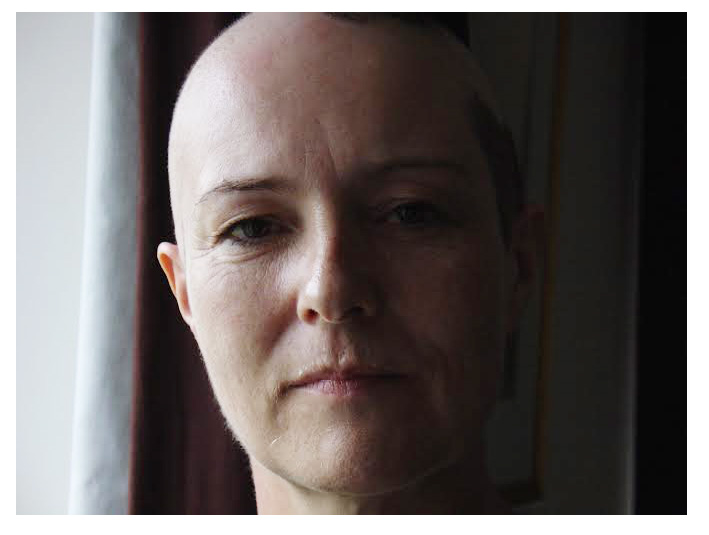Sarah’s Story
Sarah Andrews is living with an Oligodendroglioma in her right occipital lobe, a giloma, slow-growing tumour which attacks the fatty coating of the dendrocytes (which pass electrical impulses through the brain).
 Although Sarah had lived with the tumour for years before diagnosis, it didn’t affect her until the 4th November 2010, when she experienced pain ‘like a hot metal spike being driven through the brain’. Following this, she had issues with peripheral sight in her left eye and, after numerous trips to the GP and eye hospital, was eventually referred to a neurologist. At first it was believed that Sarah had suffered from a chronic migraine, but the neurologist gave her an MRI scan, initially ‘to put her mind at rest’.
Although Sarah had lived with the tumour for years before diagnosis, it didn’t affect her until the 4th November 2010, when she experienced pain ‘like a hot metal spike being driven through the brain’. Following this, she had issues with peripheral sight in her left eye and, after numerous trips to the GP and eye hospital, was eventually referred to a neurologist. At first it was believed that Sarah had suffered from a chronic migraine, but the neurologist gave her an MRI scan, initially ‘to put her mind at rest’.
Sarah’s tumour was then discovered: a cancerous giloma the size of a golf ball. The tumour is inoperable due to the damage that would be caused. Following on from the diagnosis on January 2012 Sarah had a biopsy in the same month and then a course of radiotherapy which finished on 19th April 2012, leaving things stable since.
‘My “life” stopped the day I was diagnosed. I was a psychotherapeutic counsellor and cleaner, but had to surrender driving licence on day of diagnosis. I do not know the date I found brainstrust, I only know it was in the middle of the night, about 3am, and I was in a state. I found the number, rang, left a message and Helen called me back, straight away. I was amazed that someone could care (she had been in bed, asleep) and I think she said “but you needed me now” and since then that is the only thing I have ever felt from this fantastic charity – love, support, friendship and care”
Sarah has found much comfort in brainstrust’s Facebook support page, which allows her to feel ‘normal’ by talking with others who have the same issues.
“We share good/bad/sad news and support each other as best we can. It is a family and a community, and yes that means we disagree sometimes, but it means we are real and at the end of it we are there for each other”
Sarah, known as Sweetie Pie on the support page, has also provided much support herself to other brain cancer patients, not just by offering words of comfort online, but by writing poetry.
“I was never creative before, always very mathematical and analytical but I found that the “damage” done to my brain has released this part of me. I found my first poem “Scars” begging to be written and now I cannot rest if one is bubbling around my brain until the poem comes out . I am only able to write about things I feel/know (although I will take the experiences of other’s too) and was extremely pleased when they were received so favourably as being accurate. People said to me – ‘that’s just how I feel’. If they can help anyone express their feelings, then I (and my tumour) have found a life”
You can read one of Sarah’s insightful poems by clicking here.
With brainstrust, you are never alone. Click here to get in touch with one of our trained volunteers who has been through the same experiences you are going through.



